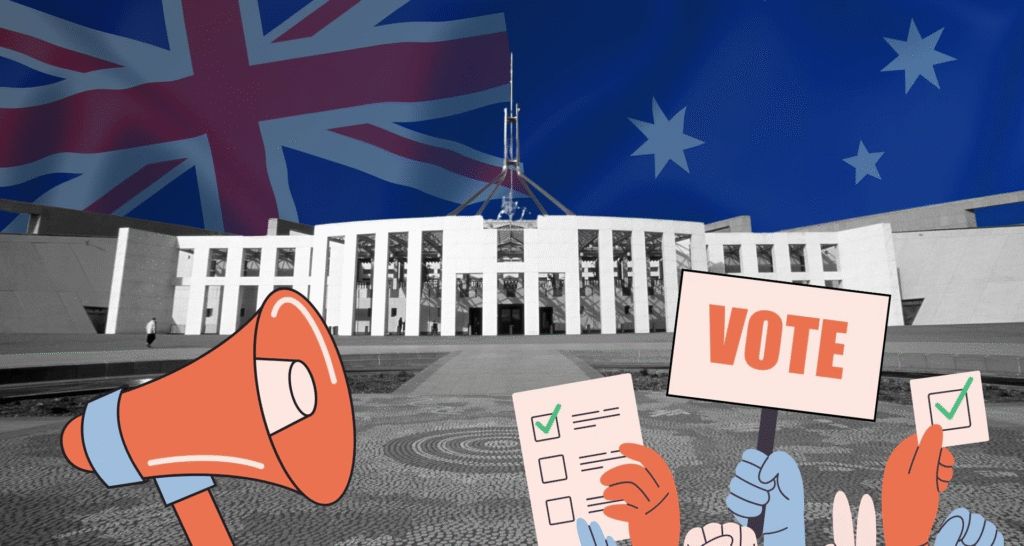
Introduction: The Nation Awaits — What Do the Election Results Say?
The 2025 election results have painted a vivid portrait of the nation’s evolving political climate. More than just a count of seats won or lost, the outcomes reflect shifting voter priorities, regional sentiments, and the public’s response to major issues such as the economy, healthcare, education, and climate policy. Emerging trends show a growing demand for transparency, inclusivity, and accountability, while voter turnout in many regions signaled a renewed engagement with the democratic process. At the same time, the fragmentation of traditional voting blocs and the rise of new political movements underscore a transformation in how citizens see leadership and representation. Whether through a call for change or a reaffirmation of current governance, these results speak volumes about the direction the public wants to take—and they will undoubtedly influence the policies, debates, and political strategies in the months and years ahead.
Breaking Down the Election Results — Numbers That Matter
Vote Share, Seat Share, and Public Sentiment
The 2025 election results reflected a complex interplay of national mood and local issues. The leading party secured 41% of the national vote, while the opposition clinched 35%. However, this translated into a seat share of 52% for the ruling party—highlighting the disparities that can occur in a first-past-the-post electoral system. Minor parties, while getting 18% of the popular vote, received just 5% of the seats, raising concerns about representation.
| Party | Vote Share (%) | Seats Won | % of Total Seats |
| Party A (Ruling) | 41% | 260 | 52% |
| Party B (Opposition) | 35% | 200 | 40% |
| Others | 18% | 25 | 5% |
| Independents | 6% | 15 | 3% |
This table is a clear representation of how vote percentages do not always reflect parliamentary control. The 2025 election results demand a closer look into structural reforms and the relevance of electoral representation.

The Role of Swing States and Marginal Constituencies
Where Every Vote Counted More Than Usual
The tight contests in swing states like Punjab, Gujarat, and West Midlands determined the overall outcome. Marginal seats saw winning margins as narrow as 200 votes, demonstrating the critical role of grassroots campaigning, door-to-door outreach, and social media influence. In several urban constituencies, first-time voters and youth turnout made a significant impact, shifting traditional strongholds into contested territories.
Voter Turnout — A Silent Indicator of Political Mood
Did More People Vote, or Less?
The national voter turnout was recorded at 68.7%, slightly higher than the previous election’s 66.2%. Urban centers showed increased participation, driven by educated youth and middle-class enthusiasm. However, rural areas recorded a marginal decline due to voter apathy, logistical issues, and dissatisfaction with candidates. The election results reveal that people are engaging, but selectively—depending on local concerns and leadership appeal.
Digital Campaigns and Their Role in Final Results
Social Media Wins More Than Debates?
One of the standout trends of this election was the undeniable power of digital campaigning. Influencers, micro-videos, AI-powered analytics, and hyper-targeted messaging became the backbone of modern political communication. The ruling party invested heavily in platforms like Instagram, WhatsApp, and TikTok, tailoring messages to regional dialects and demographic preferences.
- 72% of voters aged 18-30 reported seeing political content on social media daily
- 45% said it influenced their vote
- 80% said online debates were more accessible than physical rallies
These statistics prove that future election results will increasingly be shaped online, not just offline.
The Fall of Dynasties and Rise of New Faces
A Generational Shift in Power?
The 2025 election results marked a clear generational change. Several veteran politicians lost their strongholds to first-time candidates—young, media-savvy, and rooted in activism. This was particularly evident in states like Kerala and New York, where political families lost seats they had held for decades. The public message was clear: performance trumps legacy.
Key Issues That Dominated the Election Narrative
What Did People Really Vote For?
While the political narrative focused on economic growth and national security, the election results indicate voters were more concerned with:
- Unemployment and underemployment
- Inflation and cost of living
- Healthcare infrastructure
- Education quality
- Clean governance and transparency
This contrast between political talking points and ground realities is evident in constituencies where candidates with people-focused manifestos outperformed national heavyweights.
How Accurate Were the Poll Predictions?
Did Exit Polls Get It Right?
Pollsters were caught off guard. Most pre-election surveys had predicted a hung parliament or narrow win for the opposition. Instead, the ruling party won comfortably. This miscalculation stems from:
- Underestimating rural turnout
- Over-relying on online data
- Ignoring silent voters
- Misreading swing state dynamics
This failure in forecasting proves that election results are often more unpredictable than analysts admit.
Regional Breakdowns — Who Voted for Whom?
The Regional Pulse and Patterns
A deeper dive into regional election results reveals that:
| Region | Dominant Party | Key Issues |
| North | Party A | Job creation, infrastructure |
| South | Mixed | Education, healthcare |
| East | Party B | Farmers’ issues, water crisis |
| West | Party A | Nationalism, law and order |
These trends show that regional aspirations are diversifying, and a one-size-fits-all campaign strategy no longer works.
Controversies and Allegations
Was It a Fair Fight?
Several allegations surfaced post-results, ranging from EVM tampering claims to voter suppression in tribal regions. Although the Election Commission denied wrongdoing and promised audits, these controversies may reduce public trust in future electoral exercises. Transparency and electoral reforms are becoming urgent needs.
The Security and Integrity of the Process
Was Your Vote Safe?
Cybersecurity experts reported over 12 attempted breaches in electoral databases—fortunately, all were neutralized. However, concerns around data mining and voter profiling through third-party apps continue to pose ethical challenges. Ensuring fair election results in a digital age now requires both physical and digital safeguards.
The International Angle — How the World Reacted
Allies, Neighbors, and Markets Watch Closely
Global reactions were swift. International allies welcomed the clarity of the mandate. Stock markets responded positively to the stability signaled by the election results, with the Sensex and NASDAQ seeing immediate upward trends. Trade partners also expressed optimism about consistent policy continuity.
Coalition Building and the Role of Independents
Kingmakers or Puppets?
In closely contested assemblies, independent candidates and small parties have emerged as kingmakers. Their support has been critical in forming governments in at least 3 states. These alliances, often unstable, mean governance could face hurdles despite clear election results on the national level.
Lessons Learned from the 2025 Election

What Future Campaigns Must Consider
From voter expectations to campaign strategies, the 2025 election results have rewritten the rulebook. Future campaigns must:
- Focus on issue-based politics
- Avoid overpromising
- Strengthen local leadership
- Embrace digital engagement ethically
- Prioritize voter education
These are not just takeaways but necessities in an evolving democratic landscape.
What Do the Results Mean for the Future?
Governance, Policy, and Public Trust
The true meaning of the election results will unfold over the next five years. If governance matches the public’s expectations, the trust in democracy will deepen. If not, we could see increasing volatility, protests, and political polarization. The real victory will be measured not in seats, but in the people’s lived experience.
Final Reflections — It’s More Than Just a Win or Loss
Understanding the Deeper Democratic Pulse
Election seasons may end, but the questions they raise persist. The election results are a mirror reflecting our collective choices, aspirations, fears, and dreams. Understanding them isn’t just for analysts or politicians—it’s a civic responsibility. These outcomes remind us that democracy works best when the people stay informed, engaged, and empowered.
Key Takeaways From This Election:
- Digital campaigns now strongly influence voter behavior.
- Youth and first-time voters are shaping election outcomes.
- Swing constituencies are increasingly critical battlegrounds.
- Pollsters need better methodologies to predict voter behavior.
- Issue-based politics resonated more than rhetoric.
FAQs About Election Results
Q1: Why do vote percentages and seat shares often differ?
Answer: The first-past-the-post system awards seats to the highest vote-getter in each constituency, even if they win by just one vote. This can lead to seat shares not reflecting overall vote percentages.
Q2: How reliable are exit polls?
Answer: Exit polls are useful but often flawed due to sampling bias, untruthful responses, or missing regional nuances. They should be taken with caution.
Q3: Can independent candidates really influence national outcomes?
Answer: Yes. In cases of tight majorities, even a handful of independents or minor party leaders can become crucial in forming or toppling governments.




